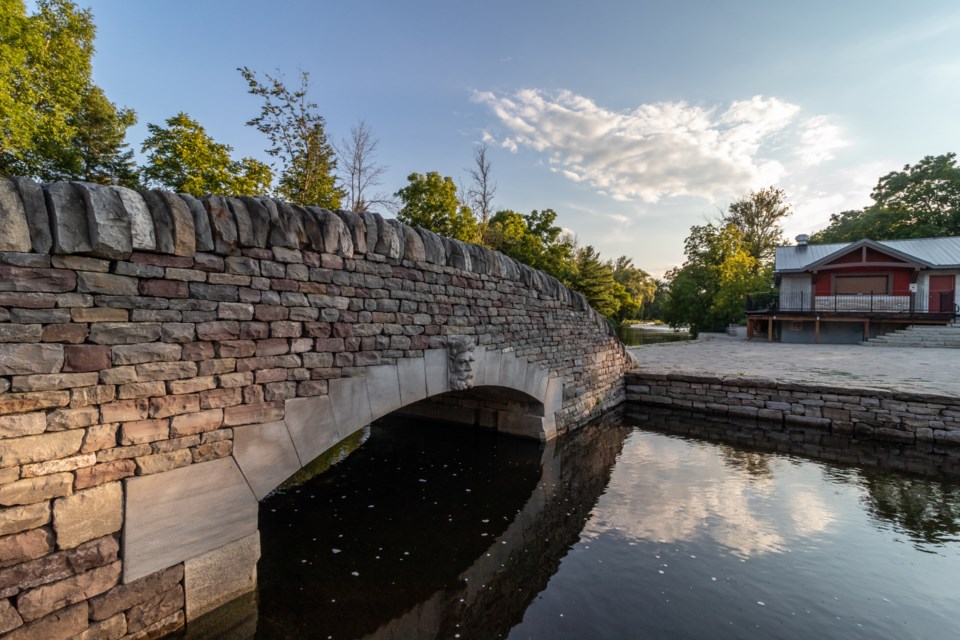If ever you’re in Perth, ON, it’s hard to miss the Tay River. This picturesque waterway twists and turns its way through the community’s historic downtown.
Nestled within a section of the river known as the old swimming hole––where the Tay River meets the Little Tay––lies a curious stone bridge, which upon closer inspection, is held up by nothing more than the weight of its own stones.
Perth is a town of many bridges, but this one is unique for its use of a technique called dry stone masonry, which involves selecting carefully cut interlocking stones which support the structure, without any mortar to bind it. The bridge won commendation as the first National Civil Engineering Demonstration Site in 2017.
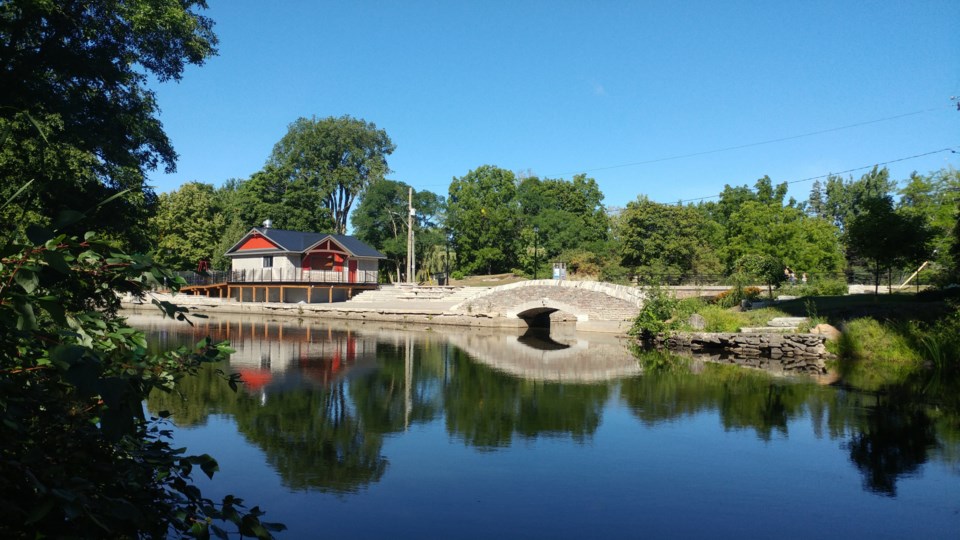
John Scott is a stonemason and former local who proposed the project to Perth council in 2015. Scott is a member of the non-profit Dry Stone Walling Association of Canada (Dry Stone Canada).
“As the joke goes, dry stone masonry is the second-oldest trade in existence,” Scott said. “Whether someone needed a wall to hide behind, or to protect their crops, they piled up stones. Each individual stone in dry stone masonry has a special geometry to it.”
Scott said the project’s location and timing in Perth was strategic.
“It was Perth’s 200-year anniversary, and we wanted to do something special to commemorate that milestone,” Scott said. “Algonquin College also used to have a campus nearby, focused on heritage trades, so we produced a lot of masons who were skilled in heritage craftsmanship like dry stone masonry.”
The bridge was built as part of Dry Stone Canada’s annual Canadian Dry Stone Walling Festival in 2016.
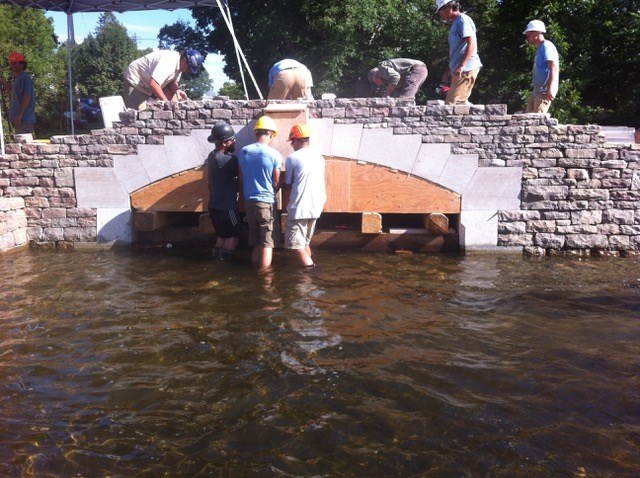
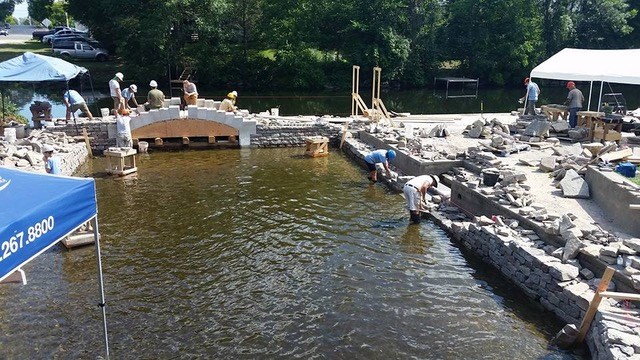
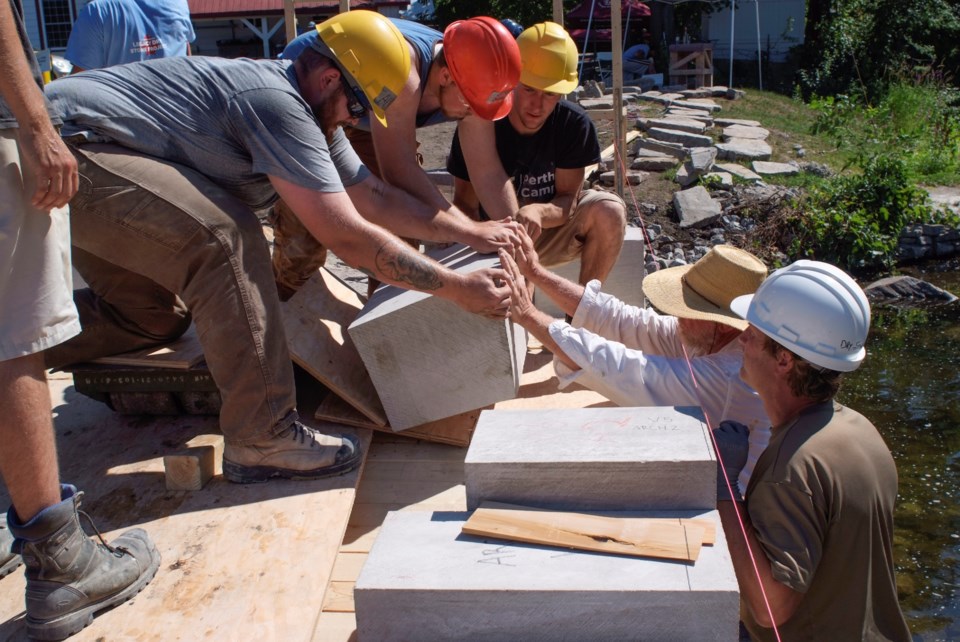
“We had something like 66 stone masons come from around Canada, but also from places like Scotland and England,” Scott said. “It was a beautiful way to work with people from around the world and learn their techniques, and in the end we have something that will last forever.”
John Shaw Rimmington is a fellow stone mason and also worked on the project alongside Scott.
Rimmington said his inspiration to learn dry stone techniques came from a trip to Perth––Perthshire in Scotland that is––the sister region with whom Perth, Ont. shares its name.
“A Scottish waller friend of mine named Norman Haddow took me to a place north of a town called Crieff, where he showed me a dry stone bridge that was built only two years before I arrived,” Rimmington said. “It’s fairy tale stuff.”
“Despite only being two years old, it looked like it had been there for centuries. I asked Norman if he would come to Canada and teach some of our masons how to build one like it.”
Rimmington said the engineering of the project is something locals and visitors alike come to appreciate.
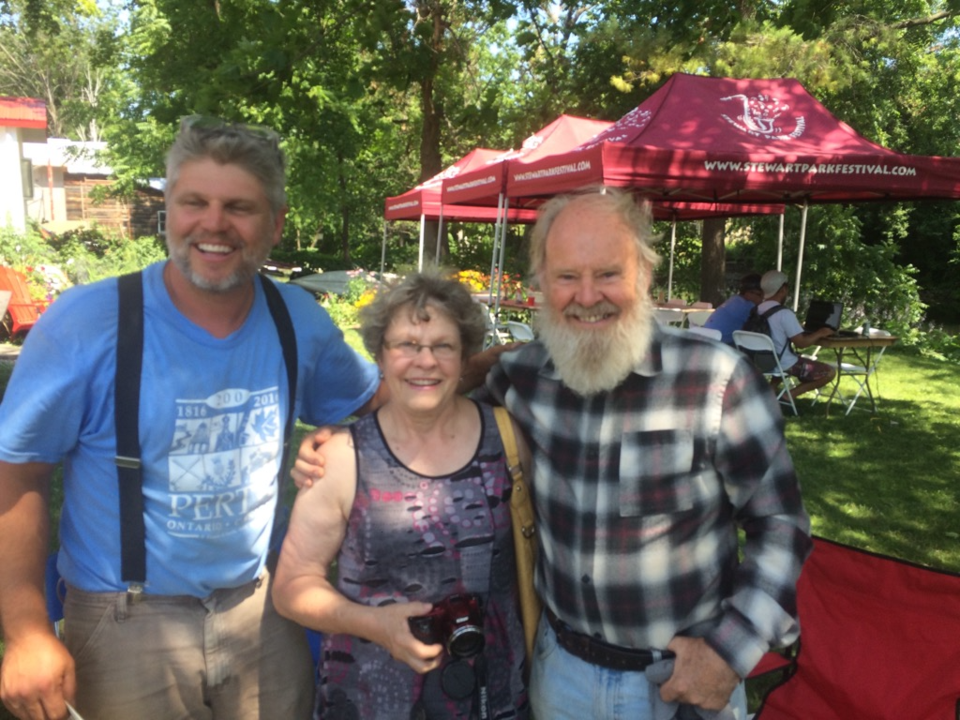
“Public bridges like these are really fun, because there’s 10 or 20 tonnes of stone hanging over a stream that seems impossible at first,” he said.
Scott said the bridge itself was built on a wooden form during construction, and taken out once all the stone had been laid.
“There was a big crowd the day we took the form away,” Scott said. “A couple of thousand people lined a neighbouring bridge and cheered as we removed it. You could almost hear the stones strain and fall into place.
“It’s really something, you just have to cross your fingers and hope it stays up.”
Scott said the bridge, and the community of Perth, serve as examples of how to preserve unique aspects of their heritage.
“Towns like Perth are particularly good at understanding that value [of their heritage],” Scott said. “Instead of letting old parts of the town fall over, they revitalize them and conserve these areas. The bridge was part of that.”
Rimmington said he hopes more people will take notice of the Perth bridge and recognize its significance.
“In my mind, it’s still quite a sleeper,” said Rimmington. “Many people go by and they don’t know what they’re looking at. Bridges like these are truly a work of art and represent the community and individuals coming together to make something amazing happen.”

